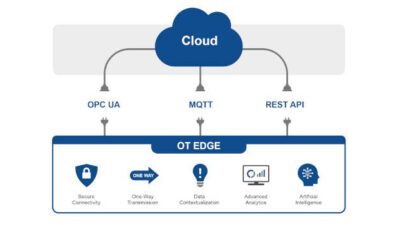Waltham, Mass. - Industrial connectivity via device networking is moving from standalone, centralized computing to distributed, interconnected autonomous operations.
Waltham, Mass. – Industrial connectivity via device networking is moving from standalone, centralized computing to distributed, interconnected autonomous operations. Consequently, devices in future environments will automatically share data and function as separate entities of the network, while still working together in a cost-efficient, productive manner, according to a new white paper released Dec. 3 by NetSilicon Inc . The report adds this trend is already happening in many applications, such as office imaging appliances, telecom and datacom devices, building controls and security systems, retail point of sale systems, industrial automation equipment and medical monitoring devices.
The white paper, ‘Three Phases of Device Connectivity: Networking’s New Frontier,’ outlining the networking market’s current state, and then provides a vision of the industry’s future. ‘This paper was conceptualized and written to detail NetSilicon’s vision of device networking over the next five years,’ says Cornelius ‘Pete’ Peterson, NetSilicon’s ceo. ‘This paper helps OEMs of electronic products understand and leverage the hardware and software technology necessary to build advanced functionality into their products, while outlining the design trade-offs manufacturers must consider as they migrate through the three stages of device networking. With this information, OEMs will be better equipped to compete in future marketsss.’
The report is also a roadmap for OEMs of electronic products, and provides information that can help companies stay competitive. For instance, the white paper adds that industry analyst group IDC is reporting that unit shipments for non-PC, network-enabled devices will reach $44 billion by 2005, and that analyst group Forrester Research forecasts the market for Internet devices to expand to 16 billion devices deployed between 2001 and 2010.
NetSilicon’s three phases of device connectivity include:
Phase I: Basic Connectivity – OEMs equip products, such as printers and security cameras, with essential networking functionality, such as Ethernet 10/100 and basic Internet connectivity via Transmission Control Protocol/Internet Protocol (TCP/IP). 32-bit microprocessors will be necessary to support performance for future upgrades.
Phase II: Value-Added Functionality – Building on Phase I technology, products’ value will be further enhanced by combining 32-bit microprocessors’ intelligence with advanced networking services such as Hypertext Transfer Protocol (HTTP), Simple Network Management Protocol (SNMP), e-mail services and File Transfer Protocol (FTP). This will enable data collection and distribution among collaborating devices.
Phase III: Full Enterprise Member – Intelligent networked devices become fully participatory and autonomous members of the business operation, making local decisions based on shared information with other devices. The necessary software includes XML (Extensible Markup Language), SOAP (Simple Object Access Protocol), Security, UPnP (Universal Plug and Play) JVM (Java Virtual Machine), DCOM and CORBA. Notably, the 32-bit hardware platform is scalable, flexible and affordable enough to handle OEMs’ Phase III device computing and data throughput needs.
Besides outlining functions in these phases, NetSilicon’s paper also presents detailed hardware and software requirements to support specific functions, as well as timeframes for early- and mainstream-adopters.
NetSilicon adds its views are supported by real-world applications of device networking technologies in a variety of industries. The company gained insights from connecting devices in the imaging industry with Ricoh and Xerox; learning about retail point-of-sale systems with Industrial Electronic Engineering (IEE); networking exercise and training equipment with FitLinxx; working on automotive diagnostics with Rymic Systems; and assisting with facilities management and security systems with World Wireless Inc. These applications represent first- and early second-phase networked devices.



